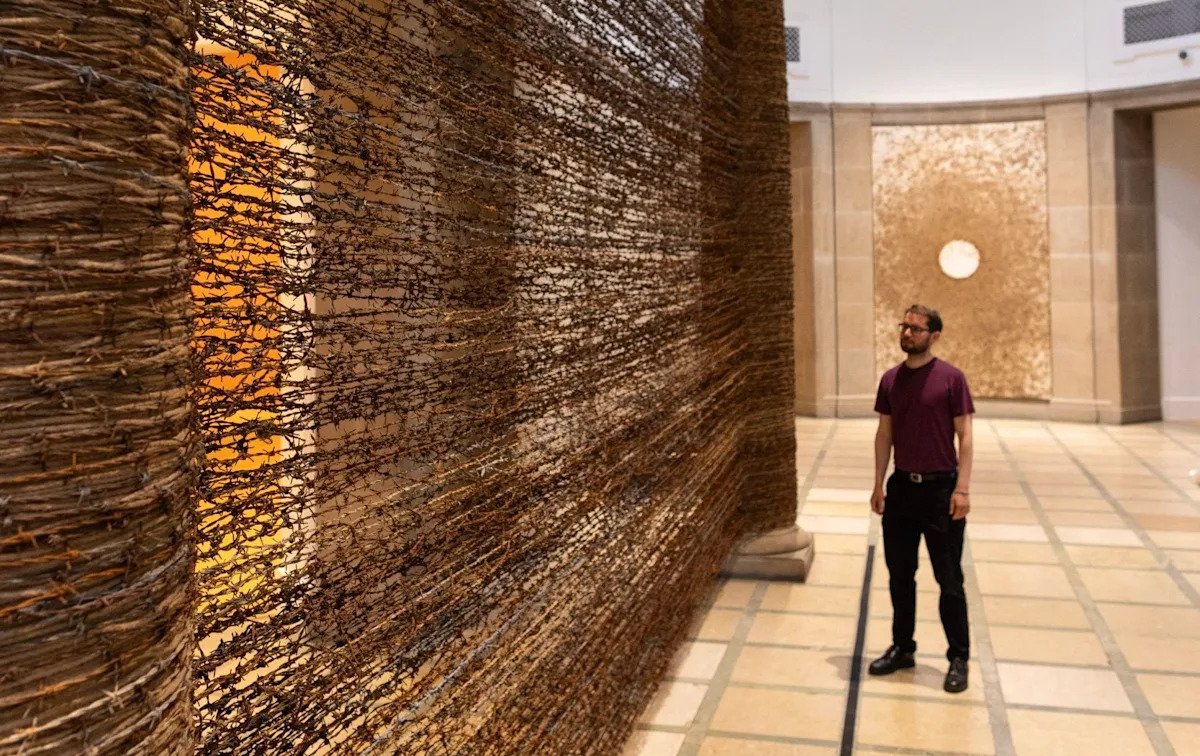
Long before the female gaze was a thing in photography, there was vivian maier. The photographer, who lived in New York City from 1951 to 1956, then in Chicago until she died in 2009, shot everything. She used her camera lens as her diary of what it was like being a lonesome woman documenting society with a sharp eye in Postwar America and then into the swinging sixties.
A new exhibition, “Unseen Work” on view at Fotografiska New York, is the first museum show in New York dedicated to the vast work of the late artist, whose photos were completely unknown—and mostly unprinted—during her lifetime. The show, which runs until September 29, features over 230 photos from the 1950s to the 1990s, documenting, among other things, classic street style in New York City. It is spread across the fourth and fifth floors of the museum, but the real, best work here is all on the fifth. That’s because it showcases Maier’s obsession with people-watching. She shot portraits of everyday people in Chicago and New York City at their best: hardworking common people on the streets who nonetheless present a classy image because people routinely put their best feet forward in the days before athleisure took hold.
SEE ALSO: The World Trade Center Offers Case Studies in Making Space for Artists in Urban Centers
What we see on the streets of New York City are a lot of hats and pearls, women reading newspapers, white gloves and wild purses, trench coats and fedoras, all capturing an era through its everyday fashions. School children cross the road with their parents, bag ladies linger, people wait for the bus—notably in front of buildings that are still there today, from the New York Public Library building on 42nd Street to the churches along Madison Avenue.


The fourth floor presents her collection of self-portraits, some of which are shadows of the photographer or reflections in mirrors. There are also photos of industrial neighborhoods and rural areas, like farms and suburban streets in Illinois.
Maier was an overlooked talent who never “made it” as a photographer in her lifetime, and she had a knack for capturing the shadows of society, those who were similarly overlooked or ignored. Thoroughly steeped in her era, she also captured the American dream, as immigrants from Japan, Mexico and Europe moved to the U.S. in the 1950s. Seen through modern eyes, these are “the struggles of the American dream,” and though the museum’s press release calls it a “façade,” these hardworking people, who wore suits, ties and hats at least looked like they were better off working in the U.S. for their families than back in their home countries.
Today, Maier is considered one of the greatest photographers of the 20th Century, even though she never developed her own film or exhibited. She worked as a nanny for wealthy households, and for Phil Donahue; photography was never her livelihood, but it’s unclear why Maier essentially kept her hobby a secret. She put her undeveloped, unprinted film in storage in the early 2000s, and then due to unpaid rent, the negatives were auctioned off by the storage company in 2007 just two years before her death. They were subsequently bought by a filmmaker and photographer named John Maloof, who began to promote her work. (The film Finding Vivian Maier, nominated for Best Documentary in 2015, retraces Maloof’s journey from Flickr virality to exhibitions in New York, L.A. and London.)


Looking back at the legacy she left behind in her negatives, Maier was arguably the first street-style photographer—one who tended to shoot in working-class neighborhoods where the most interesting style can often be found. She was also a trailblazing woman photographer—she started shooting in the 1940s in France and kept at it for most of her life, strolling through cities with her trusty Rolleiflex camera around her neck.
Maier rarely shot famous people, but when she did, she showed their genuine side. She photographed singer Lena Horne in 1954 in what feels like her only real paparazzi shot of a celebrity. It is steeped in sincerity, like a fan photo. Horne smiles and is dressed casually, seemingly going from one meeting to another.
But while no paparazza, Maier did use a clever paparazzi style to photograph people on the streets of New York without their knowledge, capturing fleeting moments that would otherwise disappear in moments. They’re honest, raw and cinematic—it’s rare for artists to document a place or a time with such sincerity today. She also captured New York, with an innately smart composition and crispness, long before it changed into the mega metropolis it is now. Her New York feels smaller, more intimate. In that way, a visit to the Fotografiska exhibition is like traveling through time.






